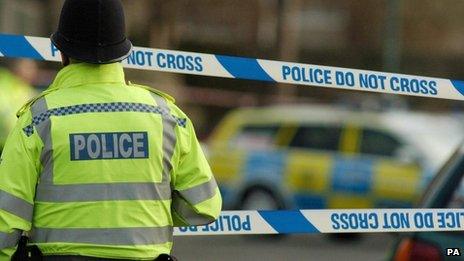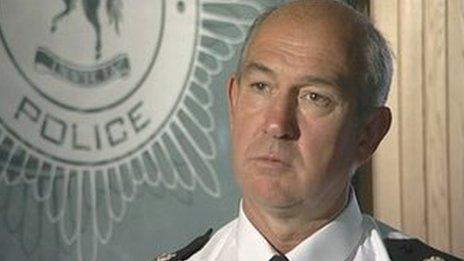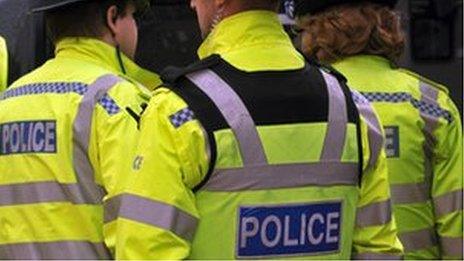Crime stats: The truth is out there
- Published
- comments

Last week, the UK Statistics Authority, the watchdog that oversees the publication of official data, said it could no longer approve crime figures based on information recorded by the police in England and Wales.
The report said that there was accumulating evidence that the figures may not be reliable - and they needed to be thoroughly overhauled.
The decision to "de-designate" police statistics does not affect the reliability of the Crime Survey for England and Wales (CSEW), which is the other official measure. But it is damaging all the same, given that the police should be fairly well-placed to tell us what is happening on the streets.
Sir Andrew Dilnot, the head of the UK Statistics Authority (UKSA), has now confirmed to MPs that the problems look so bad that the effort to fix police failings will probably lead to a rise in the number of recorded crimes.
Speaking to the the Public Administration Select Committee on Tuesday, he said: "It is quite conceivable, indeed I think quite likely, that if there is proper auditing introduced, the recording of crime is improved, that we will see recorded crime increase."
Divergence
There's no dispute that crime has been steadily falling since the mid-1990s across the UK - as it has been in many other industrialised nations.
But about seven years ago, incidents recorded by the police began to fall faster than those uncovered in the extensive face-to-face interviews conducted by the rolling national survey.
What emerged from Tuesday's evidence was that the two measures of counting crime began to diverge in 2006-07. That coincides with the period when the Audit Commission lost its role in overseeing the police's collection and presentation of the data.
Experts at the Office for National Statistics (ONS) appear to have long suspected that the two events were linked - but they only began their own analysis when responsibility for crime data passed from the Home Office in April 2012.
After nine months of number-crunching, the ONS concluded in a technical report , externalthat there could be a real problem with police practices.
Within the pages of neutrally-presented evidence, the ONS said some police forces might be guilty of a "gradual erosion of compliance" with the national rules on counting crime. The report made headlines at the time because it begged a question: are police figures exaggerating falls in crime?
The ONS warned UKSA that the matter needed investigating - ultimately leading a year later to the decision to downgrade the police figures.
Those suspicions are now supported by evidence. While statisticians think some under-counting comes from human error, they say some mistakes could be caused by specific factors. These include a lack of training, failing to record offences which are dealt with informally at a neighbourhood level and even confusion among some officers over whether an offence even occurred when a suspect has gone free.
More seriously, the figures in some categories may have been massaged down to hit local performance targets. This could include defining a partially-reported offence as "no crime" or a "crime-related incident" - neither of which make it into national figures.
Her Majesty's Inspectorate of Constabulary has separately reported on major problems with figures from Kent, external. It is now preparing a national review of all forces and the inspectorate's chief, Tom Winsor, has warned that he expects his forthcoming report will uncover "fiddling".
All of that chimes with controversial evidence to MPs from police officers who explained how figures have been manipulated down the years - including allegations that the true level of sexual offences has been masked.
During his appearance before MPs, Sir Andrew Dilnot conceded that, with hindsight, the watchdog could have acted a little more quickly - and that's a lesson learnt.
But he stressed that the real question is how to best audit the police stats to ensure the figures can be trusted.
So we can expect to see audit and oversight teams walking into police headquarters - and that will ultimately lead to more crimes being recorded.
The paperwork will ultimately show a rise in the total numbers of crimes in England and Wales - and that will worry some people, even if, in reality, the actual crime rate hasn't changed at all.
Assuming those police stats go up, while the Crime Survey continues to show falls, it could be very, very confusing in the run-up to the 2015 General Election.
But in the long-term, we may get a clearer and more trustworthy set of figures that explain the real impact that crime has on society.
- Published18 June 2013

- Published19 November 2013
